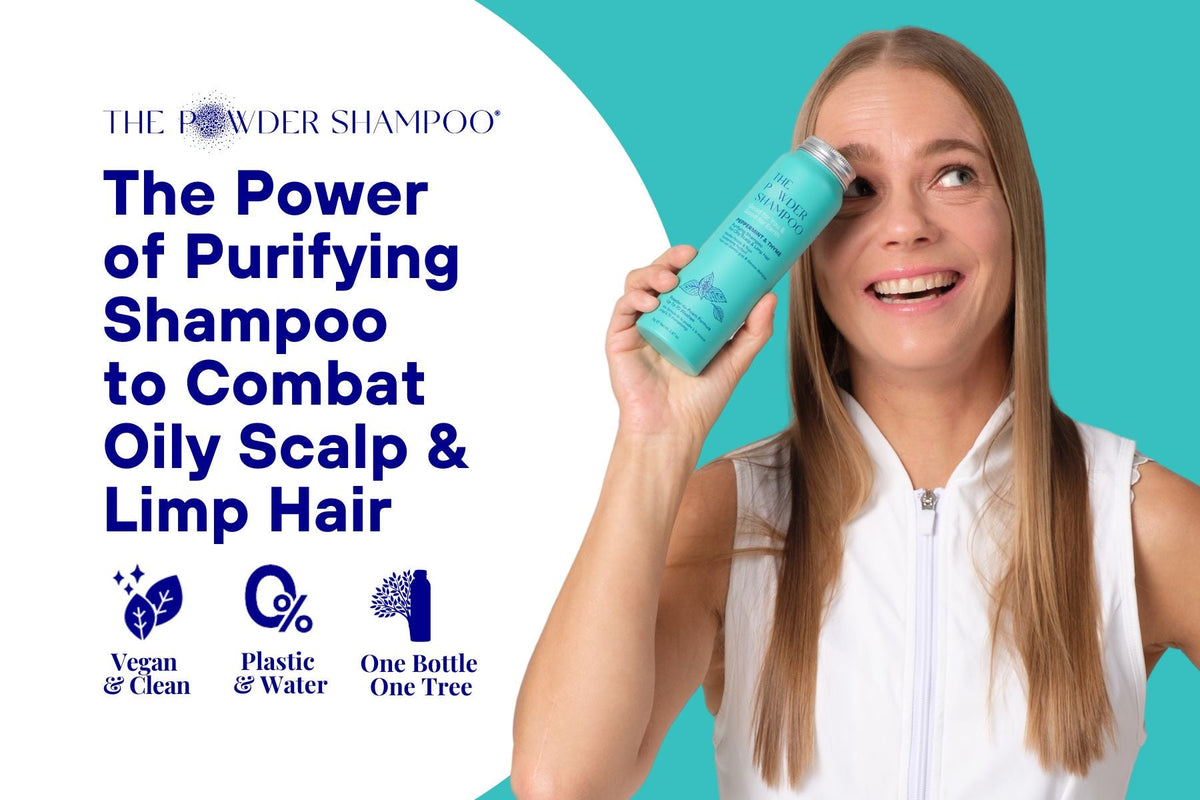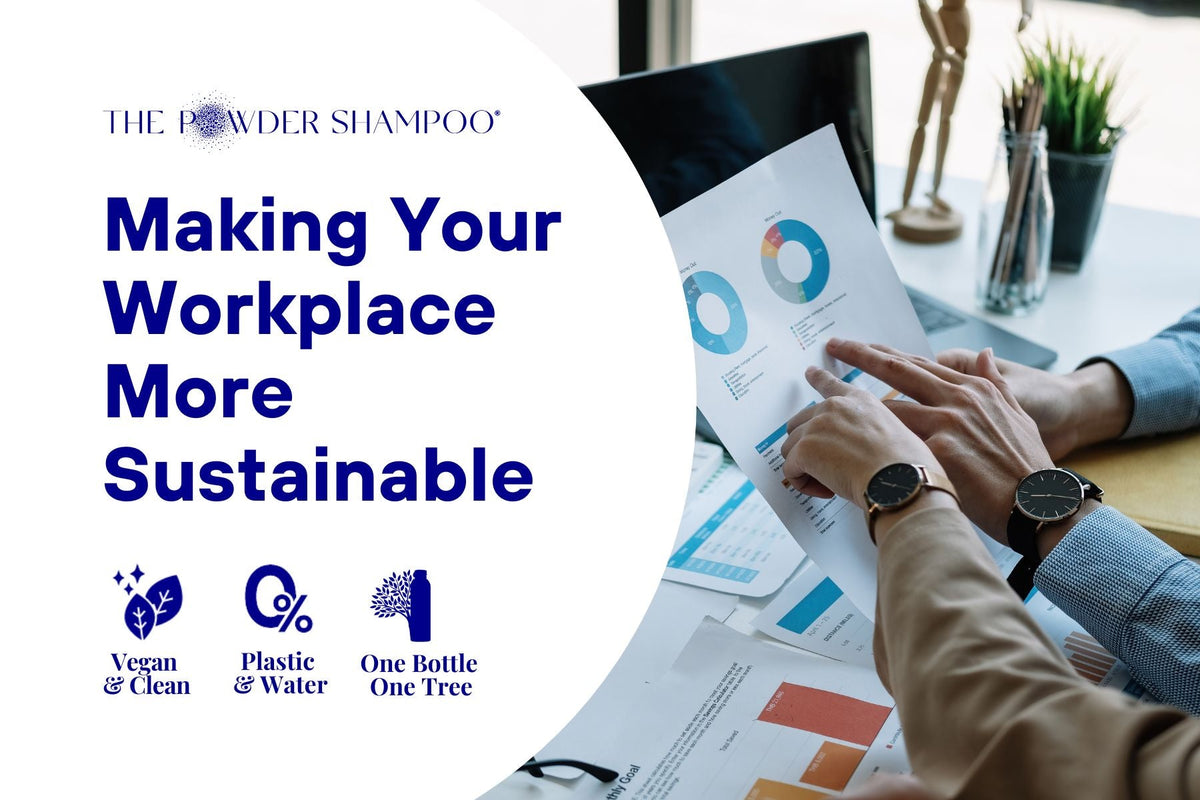The Hidden Water Footprint of Shampoo: Why It’s Time to Ditch the Bottle and Go Back to Solids


When was the last time you thought about how much water is wasted in the production of your shampoo? Most of us are aware of the plastic waste caused by shampoo bottles, but few consider the massive water footprint of liquid shampoos.
From manufacturing to rinsing, every bottle of shampoo consumes and wastes huge amounts of water—but it wasn’t always this way. Shampoo didn’t start as a diluted liquid in a plastic bottle. It was solid, concentrated, and efficient. So why did we switch? Profit.
Let’s explore how we got here, the environmental consequences, and how we can turn the tide back to eco-friendly, water-conscious alternatives like THE POWDER SHAMPOO. 🌱💚

The Water Waste Problem: How Liquid Shampoos Drain Our Resources
🚰 Water in Shampoo Production
The shampoo industry relies heavily on water at every stage:
💧 Manufacturing: Extracting raw materials, producing plastic bottles, and formulating liquid shampoos all consume significant amounts of water.
🚿 High Water Content: Most liquid shampoos are 80-90% water, meaning you’re essentially buying a watered-down product.
🚰 Rinsing Waste: On top of that, liquid shampoos require excessive rinsing, increasing household water consumption.

The Water Footprint of Shampoo
The water footprint of shampoo includes:
📌 Production Water Use – The water used to manufacture the product and its packaging.
📌 Consumer Use – The water needed for rinsing.
📌 Disposal Impact – The wastewater generated when shampoo is washed down the drain.
Some studies suggest that the use and disposal phase of shampoo accounts for the largest portion of its total environmental impact.
The Hidden Chemical Problem: Why Water-Based Shampoos Need Preservatives
There’s another serious issue with water-based shampoos—they need high amounts of preservatives to stop bacterial and mold growth.

💦 Water = Bacterial Growth: Any product that contains water is a breeding ground for bacteria, mold, and fungi. To prevent this, commercial shampoos are loaded with preservatives like parabens, formaldehydes, and synthetic chemicals that keep them from spoiling. ⏳ Shampoos That Last Forever: Thanks to these chemicals, most liquid shampoos have an unnaturally long shelf life—sometimes lasting years or even decades without going bad. ⚠️
The Health & Environmental Impact: The problem? These harsh chemicals don’t just sit in the bottle. They absorb into our skin, wash down our drains, and pollute our water systems, harming marine life and disrupting ecosystems.
Synthetic fragrances and preservatives have been linked to hormonal imbalances, allergies, and even reproductive issues in both humans and aquatic species.
By using water-based shampoos, we’re exposing ourselves and the environment to harmful toxins—all for the sake of a product that could have been formulated more safely in a solid, water-free form.
Why Did We Move from Solid to Liquid Shampoos? The Profit Motive
Before liquid shampoos became the norm, people used solid shampoo bars, shampoos flakes or even natural powders to clean their hair.
These products were: ✅ More concentrated ✅ Used less water ✅ Plastic-free
So why did the beauty industry switch to liquid shampoos? Profit.
💲 More Water = More Product Sold – Since liquid shampoos contain up to 90% water, companies could sell larger bottles at higher prices while making customers feel they were getting more product.
♻️ Plastic Packaging = Repeat Purchases – Liquid shampoos need plastic bottles, which drive repeat sales and keep consumers locked in a cycle of waste.
🛍️ Convenience Marketing – The beauty industry convinced consumers that liquids were easier to use, despite the fact that solid shampoos are just as effective (if not better).
This shift prioritized corporate profits over sustainability, leading to more waste, more plastic, and unnecessary water consumption.

Turning the Tide: The Rise of Waterless, Sustainable Shampoos
The good news? We can reverse this trend by switching to sustainable, water-conscious alternatives.
Why THE POWDER SHAMPOO is the Future of Hair Care
THE POWDER SHAMPOO offers all the benefits of a liquid shampoo—but without the unnecessary water or plastic waste. Here’s why it’s a game-changer:
🚫 Water-Free Formula – Unlike traditional shampoos, THE POWDER SHAMPOO is highly concentrated, so you get only what you need—no fillers, no waste.
♻️ Plastic-Free Packaging – No more plastic bottles filling landfills and oceans.
💆♀️ As Easy & Pleasurable as Liquid Shampoo – Just sprinkle, lather, and rinse—same luxurious experience, but eco-friendly.
💧 Less Rinsing Required – Saves water every time you wash your hair.
By switching to powder shampoos, we can reduce our water footprint, cut down on plastic waste, and end our reliance on diluted, wasteful products.
🌍 A Call to Action: Small Changes, Big Impact
💡 Imagine if millions of people switched to waterless shampoo—we could save billions of liters of water every year!

What Can You Do?
✅ Ditch liquid shampoos and switch to THE POWDER SHAMPOO.
✅ Use less water when washing your hair.
✅ Educate others on the hidden water waste in beauty products.
It’s time to break free from the wasteful beauty industry cycle and embrace a smarter, more sustainable way to care for our hair.
💬 Are you ready to make the switch?
Share your thoughts in the comments!
#SustainableBeauty #WaterlessShampoo #ZeroWaste #EcoFriendlyLiving #PlasticFree #ThePowderShampoo
Blog posts
Featured collection
- Regular Price
- $1,088.00
- Sale Price
- $1,088.00
- Regular Price
-
- Unit Price
- per
- Regular Price
- $828.00
- Sale Price
- $828.00
- Regular Price
-
- Unit Price
- per
- Regular Price
- $910.00
- Sale Price
- $910.00
- Regular Price
-
- Unit Price
- per
- Regular Price
- $828.00
- Sale Price
- $828.00
- Regular Price
-
- Unit Price
- per
- Regular Price
- $1,088.00
- Sale Price
- $1,088.00
- Regular Price
-
- Unit Price
- per
- Regular Price
- $828.00
- Sale Price
- $828.00
- Regular Price
-
- Unit Price
- per











